(First upload on November 9 2010. Last on October 9 2023) [ 日本語 | English ]
Mount Usu / Sarobetsu post-mined peatland
From left: Crater basin in 1986 and 2006. Cottongrass / Daylily
HOME > Plant list (植物リスト) > Elaeagnaceae (グミ科) > Elaeagnus umbellata
[Engler's syllabus (エングラー体系)]
|
65 species in three genera in the world gumi (グミ) = abbreviation of guinomi (グイの実), gui (グイ) = spine (刺) |
1. evergreen, flowering in autumn to winter, fruiting in spring to summer ___ Section Sempernirentes or Autumnales 1. deciduous, flowering in spring to summer, fruiting in early summer to autumn ___ Section Elaeagnus or Deciduae |
|
50-70 deciduous or evergreen shrubs or small trees motly in the Eurasian Continent (but the most of them are not distributed in Hokkaido) Fruit: a fleshy drupe containing a single seed → cultivation E. angustifolia L. (ホソグミ): exoticE. arakiana Koidz. (タンゴグミ) E. epitricha Momiyama (キリシマグミ) E. glabra Thunb. (ツルグミ) E. hypoargentea Hatusima (ウラギンツルグミ) E. liukiuensis Rehd. (リュウキュウツルグミ) |
E. macrophylla Thunb. (マルバグミ) E. maritima Koidz. (オオバツルグミ) E. matsunoana Makino (ハコネグミ) E. montana Makino (マメグミ) var. ovata (Maxim.) Araki (ツクバグミ) E. multiflora Thunb. (ナツグミ, s.l.)E. murakamiana Makino (アリマグミ) E. nikaii Nakai (オオナワシログミ) E. nikoensis Nakai ex Hara (ニッコウナツグミ) E. numajiriana Makino (コウヤグミ) E. pungens Thunb. (ナワシログミ) |
E. rotundata (Maxim.) Nakai (オガサワラグミ) E. submacrophylla Servettaz (フユグミ) E. takeshitae Makino (カツラギグミ) E. umbellata Thunb. (アキグミ) E. yakusimensis Masamura (ヤクシマグミ) E. yoshinoi Makino (ナツアサドリ) E. × reflexa Morren et Decne. (マルバツルグミ) = E. glabra × E. pungens E. × praematura (Koidz.) Araki (イズミグミ) |
|
Akigumi (アキグミ, 秋茱萸), autumn olive, or umbellate oleaster Life form: deciduous shrub < 4 m high Distribution: Himalayas - Japan (Kyushu - southern Hokkaido) Habitat: sunny sites, such as forest edge, establishing on nutrient-poor soils by nitrogn fixation
Biologically-invasive species to North America |
Branch: bearing sharp thorns in the form of spur branches Flower: few or many flowers fascicled on the axil - short and erect pedicel floral tube: becoming slim gradually towards the ovary Fruit: producing in small, globular fruits in autumn, ebible → seeds dispersed by animal (endo-zoochore)var. coreana (Lev.) Lev. (カラアキグミ), Aomori - western Japan, developing stellate hair var. rotundifolia Makino (マルバアキグミ) Distribution: Japan (south to Kanto District and Izu Islands) Habitat: seacoast f. argyrea Araki (シロアキグミ) f. higuchiana (Honda) H. Hara (キミノアキグミ) f. macrocarpa (Sugim.) H. Hara (オオアキグミ) |
f. nakaiana (Araki) H. Ohba (ヒロハアキグミ) f. sulcata (Honda) H. Hara (タテミゾアキグミ) |
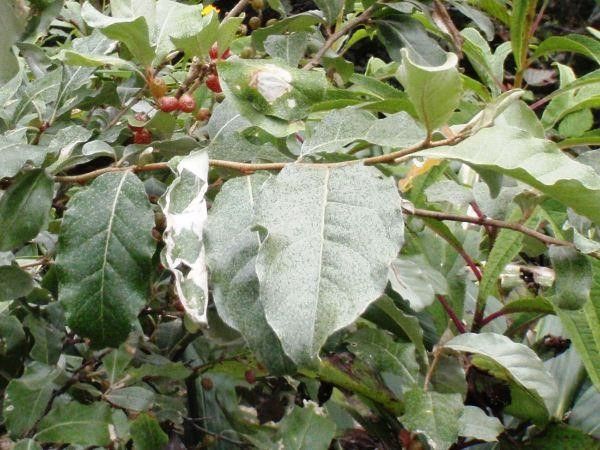 1
1
 2
2
 3
3
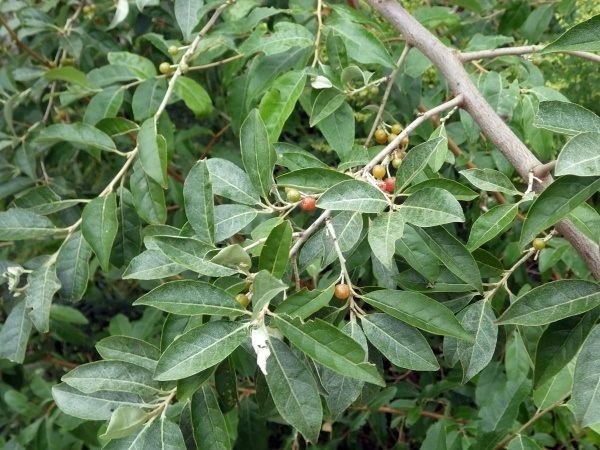 4
4
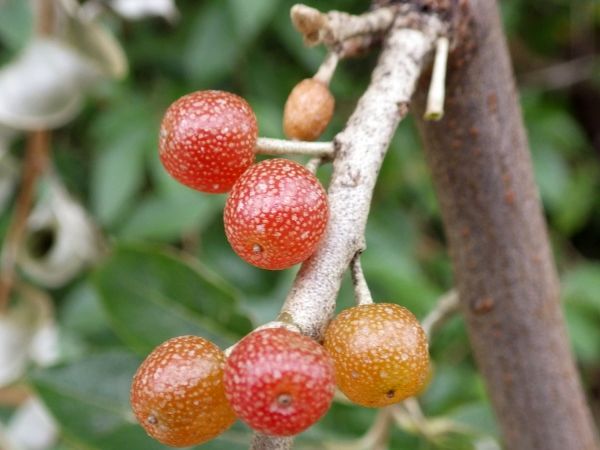 5
5
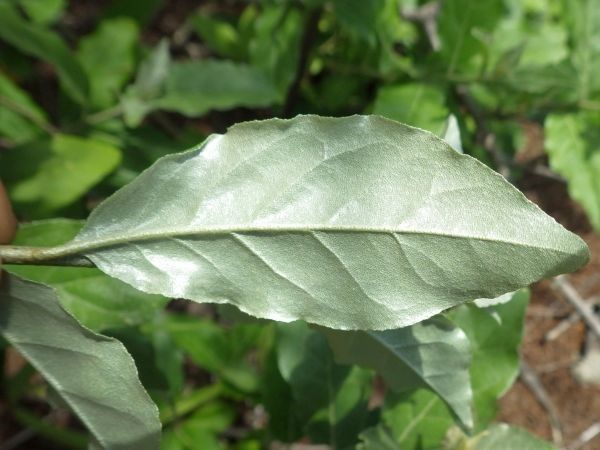 6
6
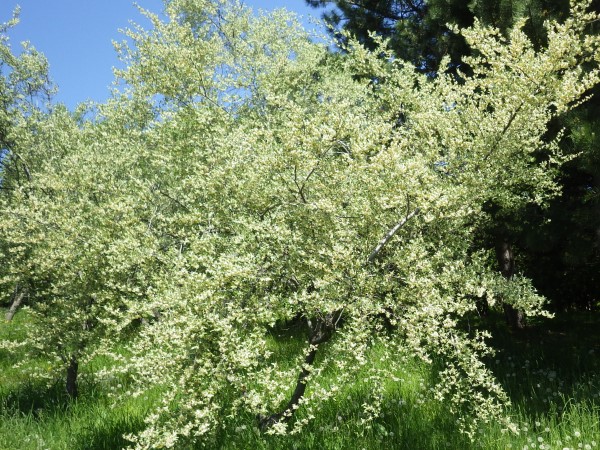 7
7
 8
8
[1/2] on Mount Hakodate, southern Hokkaido, on September 23 2010. [3] in the play ground of Fuji Kindergarden, N16/W3, North Ward, Sapporo, on May 16 2018. [4/5] in a small park (not maintained well) near the Muroran Marine Experimental Station of Hokkaido University on September 12 2016. [6] on the southwestern slope of Mount Koma (flora) on July 10 2017. [8/9] in Maeda Forest Park (前田森林公園), Sapporo, on May 30 2020. Records: along Tonneusu Pond (トンネウス沼) in the North Ward of Sapporo on November 7 2020.
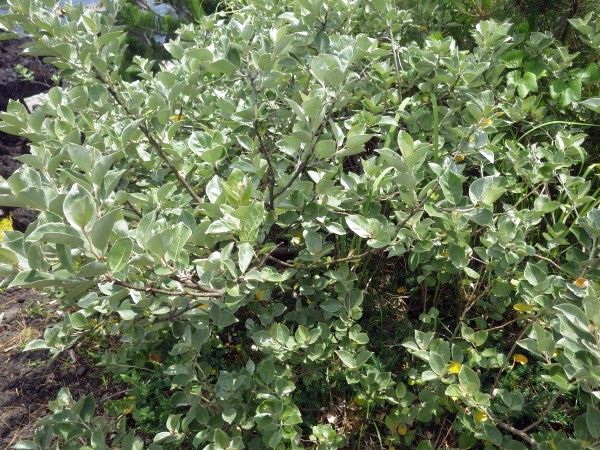 1
1
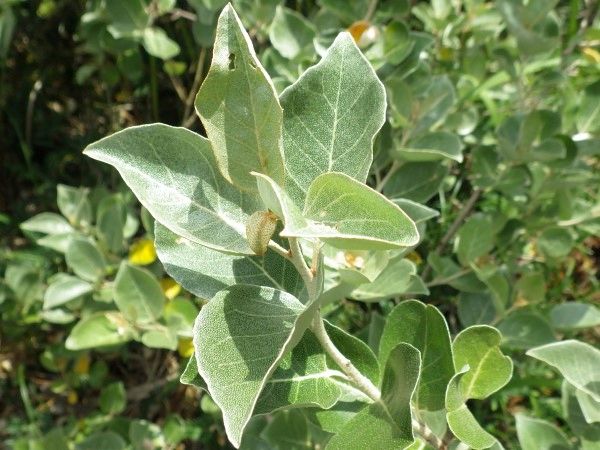 2
2
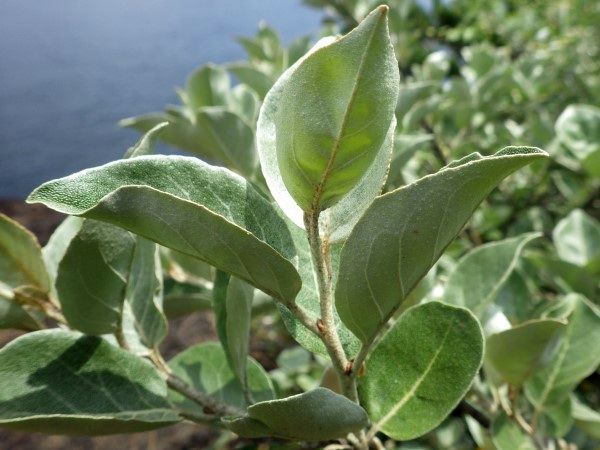 3
3
[1-3] close to a seacoast along a coastal trail in Oshima Park (Oshima coastal plant community), Izu-Oshima Island (伊豆大島), on June 8 2023.